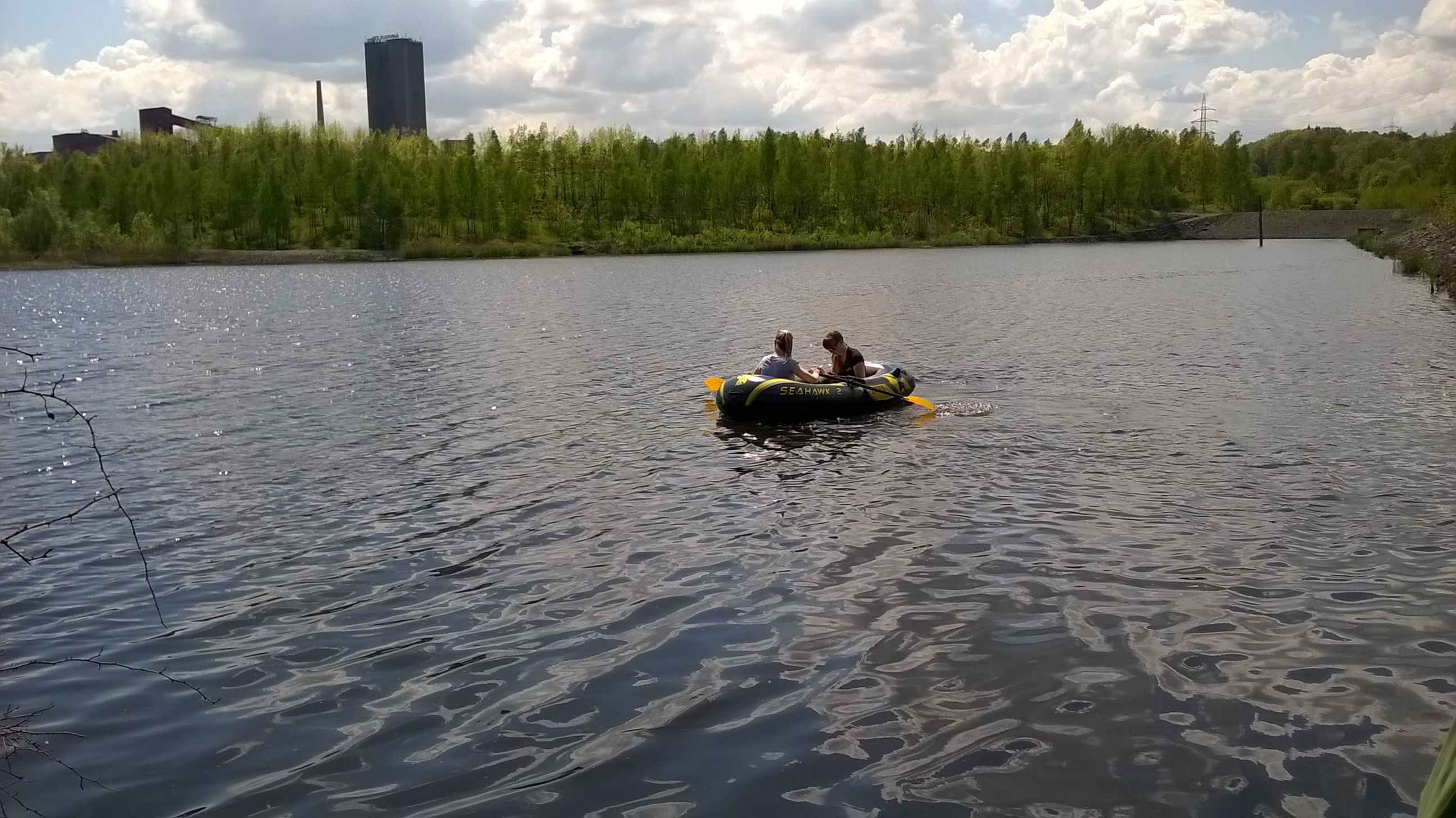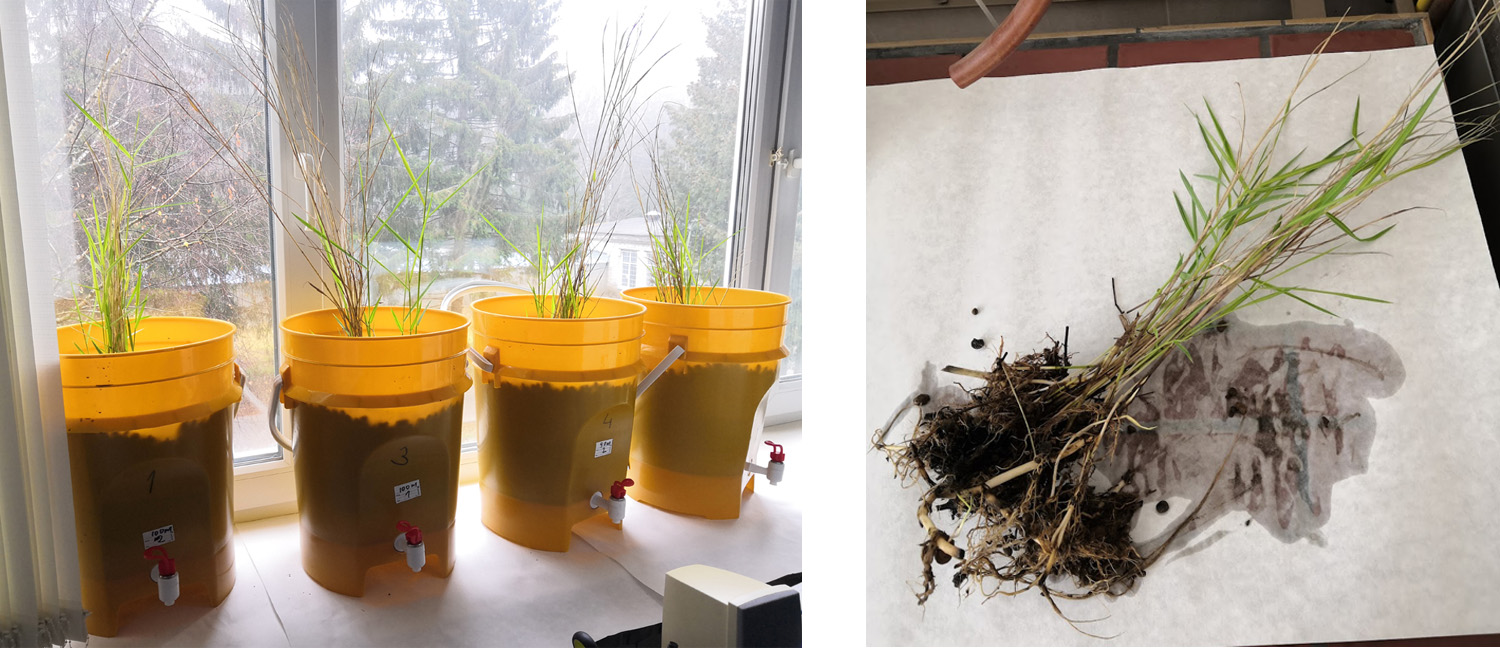Use of green plants for treatment of mine and industrial sewage
News, 24 December 2021
At present, one of the research areas of the Sector of Neutron Activation Analysis and Applied Research of the Frank Laboratory of Neutron Physics (SNAA&AR of FLNP) is a phytoremediation method. A SNAA&AR researcher Aneta Svozilikova Krakovska speaks about the essence of this method and the results obtained with this method in FLNP.
The phytoremediation method uses green plants to remove pollutants from environmental objects. This method is used for the treatment of soil, sediments, sludge, or water. Contaminants that can be removed in this way include, for example, heavy metals, radionuclides, dyes, pesticides, or even drugs. The aim of this method conducted at the SNAA&AR FLNP is to assess the possibility of using the method to purify industrial wastewater containing heavy metals, as well as to choose optimal conditions for the experiment.
Two experiments were carried out. Firstly, industrial Zn-laden wastewater was used. To assess the efficiency of extraction, Typha gracilis and Phragmites communis were planted in two kinds of substrates. Half of the samples were planted in the combination of quartz sand and gravel. The second half of the samples grew in the ceramsite sand. The regular sampling of water (once per week) indicated a very quick removal of zinc ions from zinc-containing wastewater.
Therefore, the model experiment followed the research. For the time being, samples of Phragmites communis were planted into the ceramsite and were watered by water containing zinc in concentrations ranging from 10 to 100 mg/L. After zinc removal from the water, all parts of the plant (root, leave, stem) and substrate were analyzed. The concentration of zinc in the samples was analysed by Inductively coupled plasma atomic emission spectroscopy (ICP-AES). ICP-AES uses the inductively coupled plasma to produce excited atoms and ions that emit electromagnetic radiation at wavelengths characteristic of a particular element. The plasma is a high temperature source of ionised source gas, namely argon. The results indicate accumulation of zinc in the particular parts of plant and its mobility.
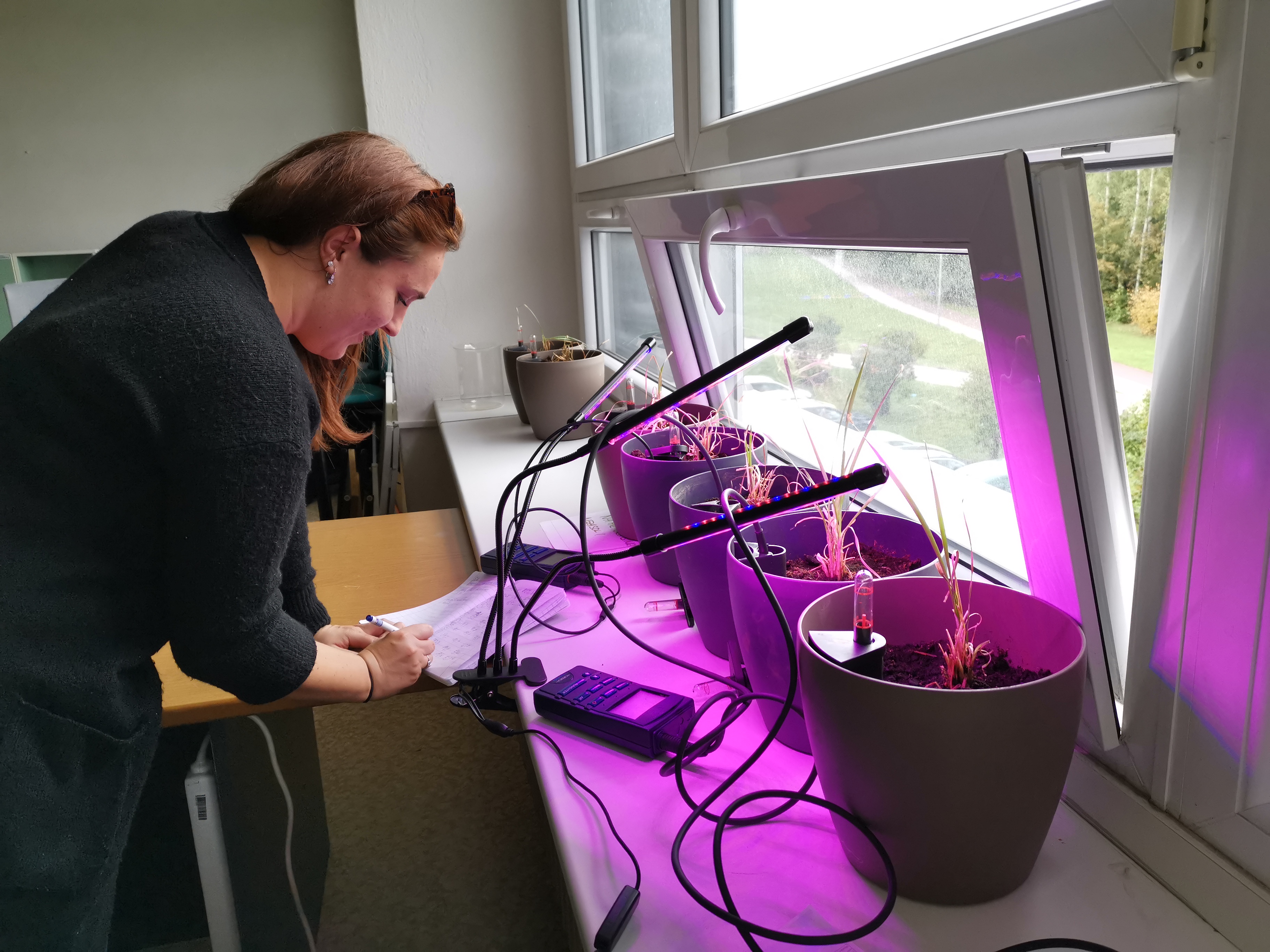 Growing samples under LED lamps with three linear phyto-luminaires with multispectral colored light; blue color is suitable for vegetative plant growth, and red light stimulates the growth and flowering of plants. .
Growing samples under LED lamps with three linear phyto-luminaires with multispectral colored light; blue color is suitable for vegetative plant growth, and red light stimulates the growth and flowering of plants. .
Another bioremediation study, connecting the VSB – Technical University of Ostrava, Palacký University in Olomouc and the Joint Institute for Nuclear Research in Dubna is based on a study of the adaptation of reeds growing in water areas affected by mine water. For safety reasons, it is necessary to pump the water located in the mine during the mining operation. Mine water is not only pumped from the mines in operation but is also pumped from already closed mines, to ensure a stable level of mine water level and low pressure of mine gases. The dominant contaminants of mine waters are dissolved substances, in the case of the waters of the Ostrava-Karviná district, which is the area of interest of the initial research, then especially dissolved inorganic salts. These waters are discharged from sludge ponds into watercourses, albeit only in regulated quantities. The position of mine waters after mining and their evaluation in terms of the risk of contamination of watercourses has not been yet treated by our legislation. Only the quantity of discharged water is controlled by legislation, not the quality.
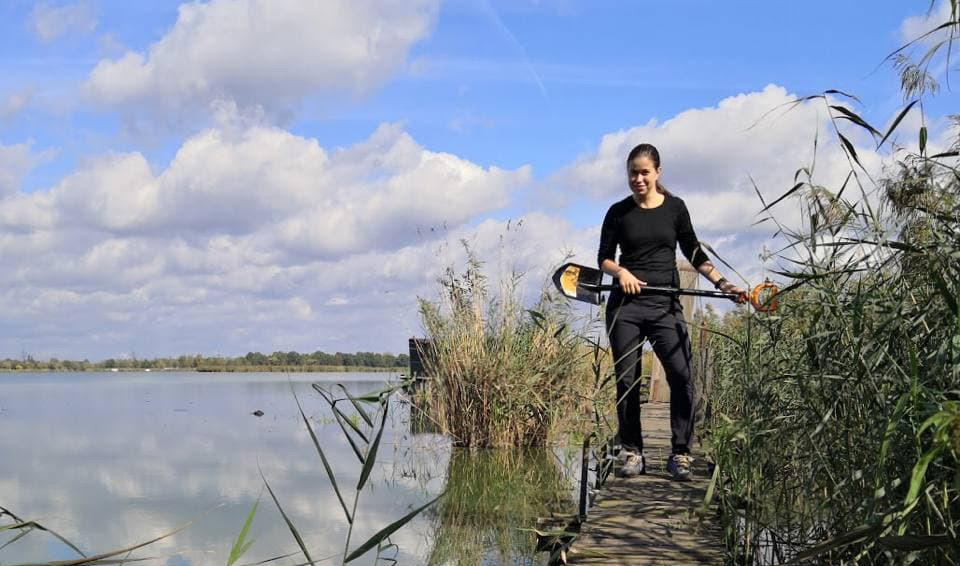 Aneta Svozilikova Krakovska: sampling of reeds and bottom sediments.
Aneta Svozilikova Krakovska: sampling of reeds and bottom sediments.
The students of the Department of Environmental Engineering, Faculty of Mining and Geology, VSB – Technical University of Ostrava (in 2014–2016 mainly doctoral student Petra Langerová, doctoral student Anna Brodská since 2017) under the leading of Jana Nováková began to solve the problem of phytoremediation of salt mine waters using reeds to determine the degree of impact of contaminated water on vegetation. The process of phytoremediation, in this case, can briefly be described as bioaccumulation, i.e. the transport and deposition of salts in plant cells. The initial action of salt water can also trigger the so-called water stress when the osmotic pressure in the cells decreases due to the increased salinity of the water. That reduces the ability of plants to absorb not only water but also minerals that are vital to them. And there is a toxic effect of high concentrations of sodium and chloride ions, the adverse effects of which occur in all stages of plant development. The results show that the reed (Phragmites australis), a halophytic plant, adapts and even expands in the saline sludge tanks of Ostrava-Karvina district with discharged mine waters. It can also deal with so-called deposit waters, mainly sodium-chloride waters with sulphates and a neutral pH. Jana Nováková and doctoral student Petra Langerová kept the experiment for three years when the reed planted in the sludge substrate and watered with mine water from the Lazy mine managed to survive at extremely high concentrations of chlorides and sulphates.
 Preparation of biomass samples for analysis
Preparation of biomass samples for analysis
The follow-up research aimed to verify the phytoremediation abilities of reeds stimulated by the application of phytohormones. Phytohormones are important components of plant metabolism, significantly affecting plant growth and development. This research takes place in the Olomouc Laboratory of Growth Regulators of Palacký University and the Institute of Experimental Botany of the Academy of Sciences of the Czech Republic under the leadership of Jana Kočířová, Karel Doležal, and Petr Hekera. Two types of phytohormones, auxins, and cytokinins were used. The tested plants were taken from the saline waters of the Ostrava-Karviná district. The results come to the conclusion that reeds treated with phytohormones are able to bioaccumulate higher concentrations than untreated reeds. Biomass were analysed by instrumental neutron activation analysis at the Frank Laboratory of Neutron Physics at the Joint Institute of Neutron Physics at IBR-2 reactor. The method allows to perform qualitative and quantitative multi-element analysis of samples with the determination of the presence of both microelements and macroelements.
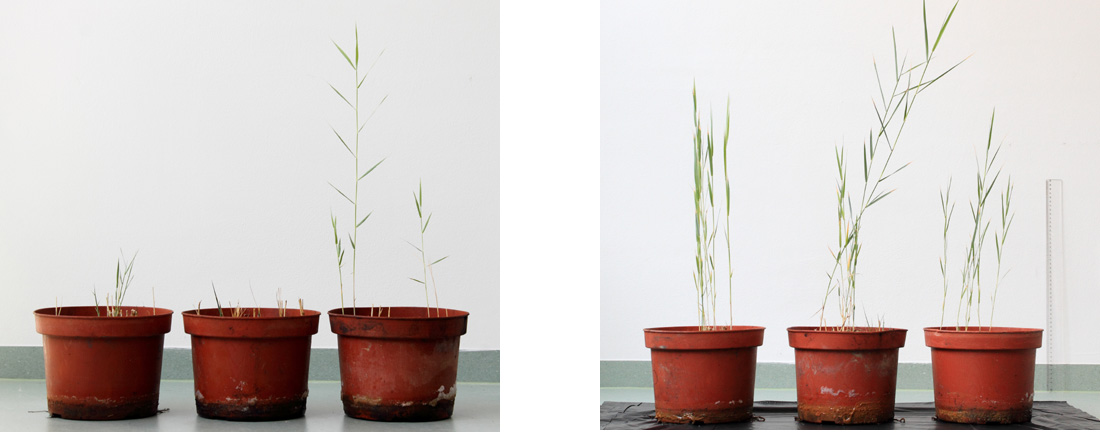 On the left: reed samples, one month from the start of the experiment. On the right: reed samples at the end of the experiment 6 months later. The samples were treated with different types of phytohormones.
On the left: reed samples, one month from the start of the experiment. On the right: reed samples at the end of the experiment 6 months later. The samples were treated with different types of phytohormones.
One of the main goals of the above studies was to determine the accumulation and localization of salts and other elements that are environmental pollutants in plants and to assess their influence on plant physiognomy. The solution to this problem is possible by describing the mechanisms of the distribution of elements in different parts of the plant: root, stem and leaves.
With the support of the 3 + 3 projects and the Grant of the Plenipotentiary of the Government of the Czech Republic in the JINR, the possibilities of adapting plants to salinizing waters and soils are being sought. It is considered, how they will respond to possible climate change, or the so-called secondary salinization caused by anthropogenic influences. An essential purpose of this research is to design a fully compliant root treatment plant for specific industrial wastewater, as its implementation would be less costly and technologically demanding than other methods used for wastewater treatment.
